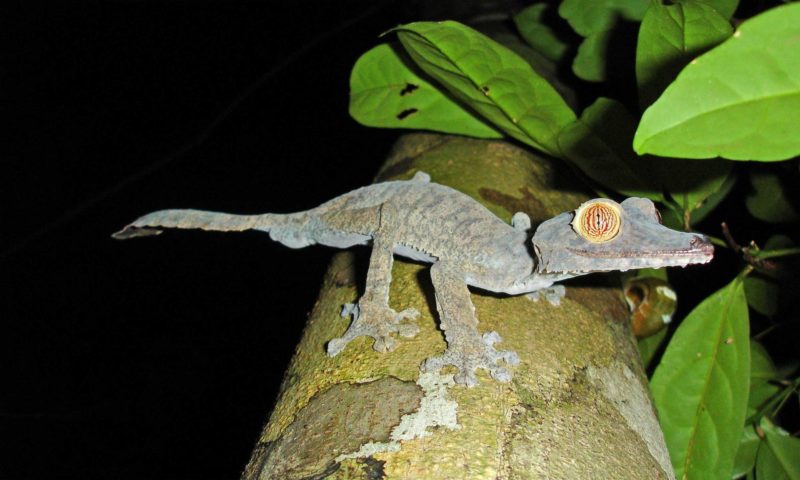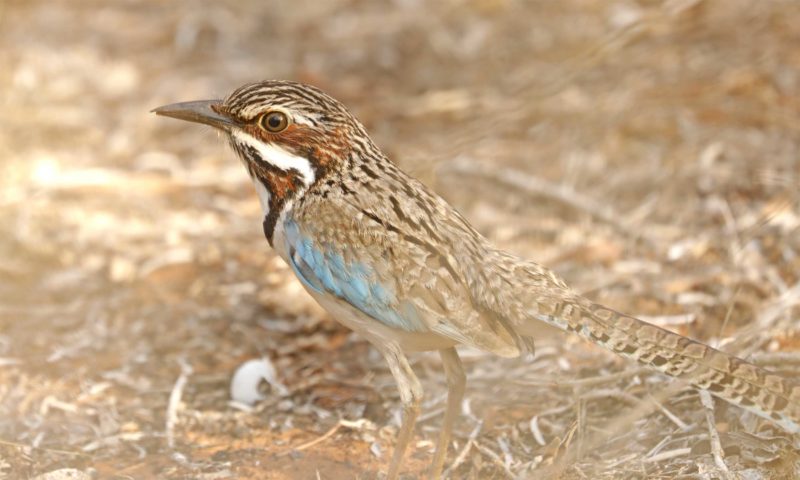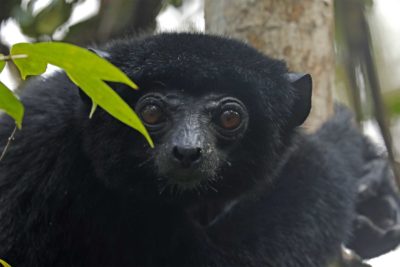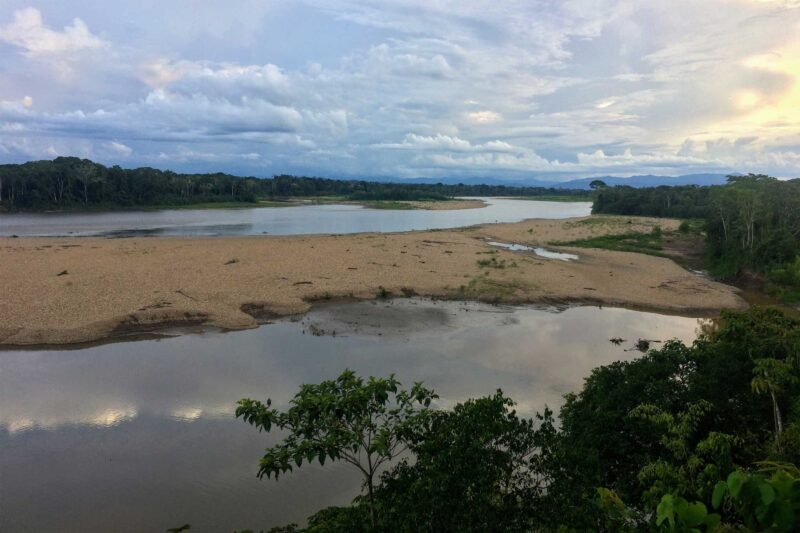Observing and photographing wildlife in its natural habitat in most parts of the world requires being in the right place at the right time, patience, perseverance and of course some luck. However, Madagascar is one of those places where the wildlife is remarkably obliging and often very accessible.
Madagascar is a huge draw for anyone interested in wildlife but those keen on photography too will be, particularly in their element. Key sites to consider from the wildlife photography perspective include the Berenty Reserve, Kirindy Reserve, Palmarium Reserve, Anja Park, Isalo National Park, Andasibe/Voimma/Mantadia Reserves, the Anjajavy Reserve, Mandrare River Camp and the Kianjavato Forest Reserve.

When to Travel
Wildlife activity is at its peak from the third week in September to the beginning of December. This is Madagascar’s spring and when baby lemurs are born, birds are on their breeding territories and the hibernating dwarf lemurs, tenrecs and majority of reptiles and frogs will be active and most visible. There are advantages of travelling at other times of year too though with the winter months of June, July and August offering less foliage on the trees, making lemurs easier to observe.
Late October and November can bring some showers, and this is always a consideration, but the increased wildlife activity outweighs the risk of some showers. For humpback whales which can be seen around the coasts of Ile Saint Marie, Antongil Bay and Ifaty July to September is best, while another population is present around the coast of the Manafiafy Beach and Rainforest Lodge until November. For whale shark and mobula ray snorkelling around the Bay of Nosy Be the best months are October and November are best.

Where to Travel
Madagascar is vast and unfortunately still has a poor road infrastructure and at times relatively unreliable domestic flight network, making it both challenging and tiring to include multiple destinations over a large area in a short time. It can therefore be more rewarding to focus on key species and habitats that are of most interest and allow longer in each National Park for greater exploration. Below are some of the top species to see and where best to find and photograph them:
Ring Tailed Lemur

These iconic lemurs are often top of the list of species to see and make for very rewarding photography subjects as they are both very beautiful and curious. Below are some of the best locations to see and photograph them:
- Berenty Private Reserve Excellent for getting up close with habituated ring tails in open gallery forest with sandy backgrounds and soft and dappled sun lighting. The ring tails here are also very abundant and easy to see on the wide flat trails. It is worth noting that some of the population here suffers from Alopecia (hair loss) due to their consumption of the leaves of an introduced tree (Leucaena leucocephala) from Central America. Berenty is a 4 hour drive from Fort Dauphin airport on a bumpy track.
- Mandrare River Camp: A fantastic location for seeing ring tails in patches of gallery forest in dappled sunlight and also in spiny forest Didiereaceae trees, which make for great photographic settings. The forests here are protected by the local Antandroy tribe. Mandrare River Camp is a 4 hour drive from Fort Dauphin but also an air strip for charter flights.
- Anja Park An excellent community-managed reserve to see very relaxed ring tails in open woodland and sometimes also on rocky outcrops with granite mountain backdrops. The ring tails here are stockier and have thicker fur due to their adaptation to the cooler climate and mountainous terrain. Accessed on the overland route between Tana and Tulear. Accommodation can be at the Betsileo Country Lodge.

- Camp Catta A rustic lodge tucked between the Tsaranoro Mountain and the Andringitra National Park that has near resident ring tails in the grounds and in the nearby forests. Accessed on the overland route between Tana and Tulear with accommodation on site.
- Isalo National Park Ring tails can be found in the wooded valley on the Namaza trail, where they are often in the vicinity of the campsite. The ring tails here are very approcahble so can be photographed very close. Accessed on the overland route between Tana and Tulear. Accommodation includes: Jardin du Roy, Relais de la Reine, Isalo Rock Lodge, Isalo Ranch and Satrana Lodge.
Verreaux’s sifaka

Famous for their “dancing” leaps across the ground and all round athletic behaviour, they are one of the most entertaining lemurs to watch.
Top locations to see them include the following:
- Berenty Private Reserve The best location to see the impressive dancing behaviour. THe sifakas here often leap across the wide forest rides providing the best opportunity to see and photograph this behaviour.
- Mandrare River Camp This is the best location to see Verreaux’s sifakas in the eerie spiny forest where they can be watched and photographed leaping between the spiny cacti-like Octopus trees. This is a very impressive sight.
- Kirindy Reserve Home to a habituated population that can be found very close to the lodge. (A 2.5 hour drive north of Morondava). Accommodation at Kirindy Lodge, Camp Amareaoux and at Relais du Kirindy Lodge.
- Zombitse Voihbasa National Park Here a small population of Verreaux’s sifakas including some of a darker morph can be found in this wildlife rich transitional forest. (A 1 hour drive from Isalo or a 3-hour drive from Tulear).
Aye Aye

Madagascar’s most mysterious and elusive lemur, the aye aye is a fascinating primate and a real curiosity of evolution. These nocturnal, almost gremlin like lemurs are extremely rare to see and sadly still persecuted in some areas of their range. There are three key locations in which to see and photograph this remarkable species.

- Farankaraina Forestry Reserve At least eight aye ayes are living in the wonderful rainforest and they are regularly seen on dedicated night walks as they feed in favoured fruiting trees between August and October in particular. They can be seen throughout the year though. At least two nights are recommended as this is very wet region of Madagascar and with poor infrastructure and basic accommodation. Sightings are usually quite high in the canopy and flash should not be used directly into their eyes.
- Palmarium Reserve – (Aye Aye Island) The best location for aye aye photography, as coconuts are placed in a forest clearing on small forested island providing superb close and eye level views. Flash is not allowed, but illumination from torches provides enough light for photography. Please note that the aye ayes here are not truly wild (only semi-wild) and the reserve recieves many visitors during the peak season. A private aye aye viewing can be arranged later in the evening, but sightings are then less reliable. 4 hours east of Andasibe or 8-9 hours drive from Tana.
- Anjajavy Private Reserve Two aye ayes fitted with GPS collars have recently been reintroduced into the dry forest reserve but can they can be elusive and don’t currently offer good photography opportunities.
Aye ayes can also sometimes be seen on strenous night walks in the forest at Daraina in northern Madagascar and at the Kianjavato Forest Reserve where several are fitted with radio collars.
Fossa

Madagascar’s top predator, the charismatic fossa (fosa) is a very impressive carnivore, that looks somewhat like a cross between a miniature puma and giant mongoose. It is in fact a member of unique family of carnivores found only on Madagascar. They are very difficult to see anywhere, but the Kirindy Reserve, 2.5 hour’s drive north of the town of Morondava is THE place to see them.
They can be seen year-round here, with some exciting mating behaviour sometimes possible to witness in mid-November, but in general sightings can be easier in the winter months from May through to September. There are several individuals that spend a lot of time around the Kirindy Lodge itself at dawn and again from 1700 in the evening. They visit both the restaurant and rubbish dumping area, looking for food and water and mostly allow a very close viewing. It is important not to get too close though and give them space especially if they have young.
Indri

The huge tail-less indri is often the highlight sighting of a trip to Madagascar. Their powerful whale-song-like cries carry through the forest at dawn, sometimes reducing visitors to tears of joy. They are most easily observed in the rainforests of Andasibe, where the community run VOIMMA and Mitsinjo Reserves are the top spots for getting close and good pictures.


In the Mitsinjo Reserve particularly local guides have habituated several family groups so that they are now very comfortable feeding just a few meters away from enthralled onlookers. They will even take an offering of their favourite leaves from the hand of a local guide. These reserves along with nearby Mantadia National Park are quieter and less busy than the busier Perinet (Analamazotra) Reserve.
Black-and-white ruffed lemur


- The fluffy black-and-white ruffed lemur is now very patchily distributed through Madagascar’s Eastern rainforests. They are reliant on Madagascar’s fast vanishing primary forests that feature tall canopy and fruiting trees with wide crowns and are sadly classed as critically endangered buy the IUCN. They are a lemur of the canopy, rarely coming to the ground and also have very large home ranges, making them a more challenging lemur to observe and photograph. However, with the expert knowledge of a local guide and some perseverance they can be seen and photographed in their natural habitat, often tracked by their loud calls.Below are the best locations for a sighting:
- Kianjavato Forest Reserve This is perhaps the best location to observe this species as some individuals have been fitted with radio transmitter collars by the Madagascar Biodiversity Network for research. With the assistance of local guides these wonderful lemurs are more easily observed here as they are also quite habituated to people. (This forest fragment is a roughly 2-hour drive to the East of Ranomafana National Park). This is also the best location to see the greater bamboo lemur. Accommodation is in Ranomafana such as SETAM Lodge, Thermal Lodge, Centrest Hotel and others. There is also simple tented accommodation at Kianjavato.
- Mantadia National Park The ridgeways of this primary forest National Park are a reliable spot to find this agile species. The trail where they can be found is steeper and obtaining good views and photographs can be a challenge, but well worthwhile. (A 1 hour 30-minute drive along a bumpy track from Andasibe village) Accommodation at lodges in Andasibe.
- Ranomafana National Park This large National Park also has fairly steep trails, but in general the going is mostly moderate. The black and white ruffed lemurs here are less easy to connect with as they roam areas that often not easily accessible. (Accessed on the overland route between Tana and Tulear) Accommodation is in Ranomafana such as SETAM Lodge, Thermal Lodge, Centrest Hotel and others.
- Nosy Mangabe This rainforest cloaked island has a small introduced population of this species and they are relatively easy to find but usually remain on the steeper trails.
- Palmarium Reserve The species has been introduced to this small private reserve and they are very habituated here, even often joining guests in the lodge grounds. This is a perfect location for those interested in taking up close and artistic pictures, but the setting is not so wild.
Red Ruffed Lemur

Surely one of the most beautiful of all the lemurs, the red ruffed lemur is a very striking animal and restricted to just the Masoala Peninsula on the remote North East corner of Madagascar. They can be fairly easy to see in the Masoala National Park between September and December when family groups are vocalising, making their location easier to track. It is worth noting that there is often very low light under the canopy of the tall trees in this ancient forest and red ruffed lemurs rarely come down to the ground or understory, so photography can be more challenging.
Coquerel’s sifaka

The endangered Coquerel’s sifaka is one of the most colourful and photogenic of all the lemurs. Coquerel’s sifakas are only found in the North West corner of Madagascar where they inhabit mixed deciduous, dry and evergreen forests. They are particularly acrobatic lemurs often posing for photographs on vertical trunks and making impressive leaps from tree to tree. There are two key locations to visit if you want to see these stunning lemurs;
- Anjajavy Hotel and Reserve: The sifakas are daily visitors to the grounds of this high comfort hotel and regularly bound across the ground in the garden area known as the oasis. This is a perfect location to take action shots and portraits of these beautiful lemurs. (Accessed only by scheduled charter flights from Tana on Tuesdays, Thursdays and Saturdays)
- Ampijoroa Forest Station: This is the headquarters of the Ankarafantsika National Park and the mango trees around the park office are a roost site for the sifakas. This is a great location to get some mid leap photographs of the sifakas in early mornings or late afternoon light.
Chameleons


No trip to Madagascar would be complete without seeing a range of its most celebrated reptiles; the chameleons. Madagascar is home to over half of all the World’s chameleons (thought to be around 150 species) including both the largest, the Parson’s and the Oustalets’s and the smallest; the Brookesia micra, endemic to the tiny island of Nosy Hara.
Top Reserves for chameleons include the following:
- Montagne D Ambre: Home to at least 11 species including the beautiful panther chameleon and a number of localised endemics such as the Calumma amber. One of the highlights of this park though is its population of Brookesia pygmy leaf chameleons which are easily found by the skilled local guides. The endemic Brookesia tuberculata which is one of the tiniest reptiles on the planet is an incredible sight. A macro lens is best for photographing these tiny reptiles.
- Mitisinjo and VOIMMA Reserves in Andasibe: These two community run forest reserves allow night walks within the forest, ideal for finding many of the smaller creatures. They are also the best locations to find the huge Parson’s chameleon and the blue-legged chameleon is very common here. The impressive Nose horned chameleon (Calumma nasutum) is now very rare in Andasibe but occasionally spotted in the old growth rainforest at Mantadia National Park.
- Other top locations include the Masoala National Park, Lokobe Reserve, Ranomafana National Park and Nosy Hara National Park.
Leaf-tailed geckos

These nocturnal reptiles are among the most superbly camouflaged animals on the planet. They have long flattened bodies, huge colourful eyes and jagged tails that almost perfectly resemble leaves. Spotting these geckos during the day is very difficult as they cling motionless to a branch or tree trunk where they blend into the surroundings, but with the expertise of local guides they can often be tracked down. They are most easily spotted at night though.
Top locations include Montagne D Ambre National Park and the private park of Domaine de Fontenay Lodge in Joffreville particular. The Mossy leaf-tailed gecko (Uroplatus sikorae) is particularly common here and the spearpoint leaf tailed gecko (Uroplatus ebenaui) and giant leaf-tailed gecko (Uroplatus giganteus) are also encountered.
Another key location to see plenty of leaf-tailed geckos and their colourful day gecko cousins is the wild Masoala Peninsula and nearby Nosy Mangabe Island and Farankaraina Reserve. Here the giant leaf-tailed gecko (Uroplatus fimbriatus) which grows to 11 inches is particularly abundant along with the lined flat-tail gecko (Uroplatus lineatus) and Phelsuma day geckos.
For the spectacular satanic leaf tailed gecko (Uroplatus phantasticus) the rainforests of Ranomafana are a great location to encounter this fascinating species with eyelash projections above its eyes.

Frogs
To encounter a wide range of Madagascar’s endemic frogs and other reptile species, the Andasibe rainforests are a must visit spot to encounter spectacular but tiny species like the colourful Boophis family. This group of large eyed and colourful frogs includes some stunningly attractive frogs and on night walks in the VOIMMA and Mitsinjo Reserves, species such as Boophis viridis, Boophis Pyrrhus and Boophis rappoides are among the highlights to look for. One of the other iconic families is the mantellas, which include some very impressive frogs that resemble the colourful poison dart frogs of Central and South America. One of the most eye catching is the Painted and Baron’s mantella found in Mantadia/Antavalobe (Andasibe area) and the Vohipara Trail in Ranomafana National Park respectively.

Looking inside bromeliads and pandanus plants are a great spot to find these frogs and damp evenings in October, November and December are the best times for frog spotting. A macro lens is best for photography.
The palm and orchid rich Palmarium Reserve is another great spot for frogs with the striking blue-black reed frog (Heterixalus madagascariensis) a notable highlight here.

Tenrecs
Another of Madagascar’s special wildlife groups are the tenrecs; small insectivorous mammals, resembling shrews and hedgehogs that have diversified into at least 21 species. They have taken on the same ecological role as shews and hedgehogs within Madagascar, but they are usually very hard to find.
The spiny lowland streaked tenrec is the most commonly encountered species in the rainforests of Mitsinjo and VOIMMA in Andasibe and also the larger Masoala and Ranomafana National Parks. Common tenrecs are also encountered in the same locations less often while the Kirindy and Kianjavato Reserves are good locations to encounter a greater hedgehog tenrec and the spiny forests of Ifaty and Berenty are the best sites for the lesser hedgehog tenrec.
Travel between September and April for the best chance of seeing one of these snuffling creatures of the forest floor.

Birds
Madagascar’s birdlife is a huge draw with five endemic bird families and at least 120 endemic species to enjoy. Taking in a range of different habitats: lowland and montane rainforest, dry deciduous forest, spiny forest and transitional forest will enable you to see a wide range of the endemic bird families and most striking species. Below is an overview of some of the key locations:
Ankarafantsika National Park
Highlights of this dry deciduous forest include the Madagascar fish eagle, Schlegel’s asity, white-breasted mesite and red-capped coua. The more secretive bird specialties here include the localised Van Dam’s vanga and Madagascar jacana.
Ifaty Spiny Forest
The spiny forests here are home to a selection of unquie species specially adapted to this arid ecosystem. The highlight is the spectacular long-tailed ground roller, which although elusive is a joy to watch and photograph. Other species to look for include the sub-desert mesite, banded kestrel, running coua and nearby the localised Verreaux’s coua and red-shouldered vanga at La Table and Madagascar plover along the coast.

Ranomafana National Park
A classic example of high-altitude rainforest with large areas of primary rainforest and an impressive list of birds. The stunted forest along the quieter Vohipara Circuit is a prime location to find secretive forest dwellers such as rufous-headed ground roller, brown mesite and the rare yellow-bellied sunbird asity although these species are very skulking and hard to photograph. The beautiful pitta-like ground roller is more conspicuous and easier to photograph through the park.
Mantadia National Park and Antavalobe Reserve
A must visit location for those with an interest in Madagascar’s endemic birdlife. Highlights include the shy scaly and short-legged ground rollers, blue, red-fronted and red breasted couas, velvet asity, collared nightjar, nuthatch and blue vangas and Madagascar pygmy kingfisher. The remote old growth forest at the little visited Antavalobe Reserve now supports a tiny population of helmet and Beriner’s vanga. This wonderfully colourful species is most easily seen in the Masoala National Park though where it occurs in greater numbers.

What to Bring
For most lemur photography which will be in trees and sometimes on the ground, a 100 – 400 mm f/4.5-5.6L telephoto lens, on a full-frame DSLRor mirror less camera or a 100 – 400mm zoom lens will give the best results. For some birds and occassionally lemurs at the top of tall old growth canopy trees (sometimes 30 meters high) a 1.4 tele-converter or even larger lens can be useful as sometimes some bird and lemur species will be feeding further away or fast moving.
A macro lens comes in very useful in Madagascar as so much of the wildlife fascination includes some tiny Brookesia pgymy chameleons, tiny big eyed frogs, geckos and other wonderful reptiles and of course peculiar insects such as giraffe-necked weevils, stick insects and giant millipedes.
A wide angle lens can also be used in many situations, not just for the many varied landscapes and scenery that Madagascar has to offer, but also for the wildlife in some situations. With some species such as the larger chameleons, a close up indri or ring tail, leaping sifakas, a resting fossa or resting leaf-tailed gecko a wide-angle lens can be great for showing the animal within its habitat context.
A tripod can also be useful in many situations in particular when in tall forest with low light conditions or for aye aye or nocturnal lemur photography when a tripod is useful for stabilization under the low light conditions.
An umbrella can be a very useful additional for night walks in the rainforests. The rainfall often encourages the frogs to come out in abundance and most of the smaller creatures are easily photographed under an umbrella if it is raining on your walk as they are usually close up. For nocturnal lemurs and looking up into canopy the umbrella technique can still shelter your camera and binoculars but it’s not so ideal. Therefore having multiple night walks in areas that could be wet at night will increase your chance to have some dry nights as well.























